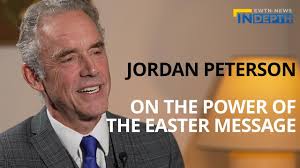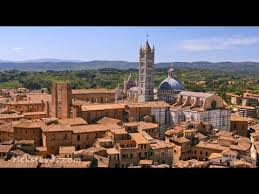If you were to ask Catholics today what they regarded as the greatest injustices in the United States, some would say legal abortion, where it exists. Others might say economic inequality. Others, systemic racism. While Catholics packing their bags to attend the Synod on Synodality might say “lack of diversity, equity, and inclusion.
But what you would be very unlikely to hear is “lack of funding for Catholic schools.” And yet it was not always so. Catholics in the 1960s, once segregation on the basis of race had been abolished, were prepared to cite discrimination against the entire Catholic population in schooling as the major lingering structural injustice in the United States.
These Catholics knew their history better, as it was almost within living memory. In colonial times through the early 1800s, schools were denominational schools and towns supported those schools. That a child’s education should be in harmony with the religious views of that child’s parents was taken for granted by everyone. That the parents were the primary educators, and teachers their “agents,” was also taken for granted.
That understanding changed, however, with the massive influx of Catholic immigrants mid-century, aided by the “common school” movement, with its own ideological purposes. Denominational schools became “public” schools, conveying a generic Protestantism, while Catholics were denied funds for any specifically Catholic education.
Often this denial took the form of “Know-Nothing” or Blaine Amendments to state constitutions. The claim was that funding for Catholic education would violate the separation of church and state. But to Catholics, that claim looked like a pretext, because public schools were obviously Protestant schools. It’s the person who wears the shoe who recognizes where it pinches.
Catholic Americans reaching their prime in the 1960s might have heard stories in their childhood from grandparents or great-grandparents who experienced first-hand, as immigrants, an invidious discrimination for being Catholic.
But is it discrimination? Vatican II in its Declaration on Religious Liberty teaches clearly that schooling falls within the parents’ exercise of religious liberty, and that to recognize a liberty only nominally, while placing burdens on its exercise, is an injustice: “civil authorities must recognize the right of parents to select, with genuine liberty, schools or other means of education, nor should any unjust burdens be placed, directly or indirectly, upon this liberty of selection.” (n. 5)

Most readers skip the chapter in We Hold These Truths (1960), by John Courtney Murray, entitled “Is It Justice?” in which he argues that “the school problem” has not gone away but is “more real than ever.” It too is an injustice of segregation, he says, “the segregation of religion, in the concrete pluralist sense, from public school premises, and the segregation of the religious school from public aid.”
The argument against it, likewise, is analogous to that against racial segregation:
The doctrine that public aid should be denied by law to certain schools simply on the grounds that they teach a particular religion was never in conformity with the moral canon of distributive justice. This moral norm requires that government, in distributing burdens and benefits within the community, should have in view the needs, merits, and capacities of the various groups of citizens and of society in general. The operation of this norm is visible in many fields – income tax laws, selective service, social security, labor laws, etc. It ought likewise to control the action of government in support of schools. The principle of distributive justice would require that a proportionately just measure of public support should be available to such schools as serve the public cause of popular education, whether these schools be specifically religious in their affiliation and orientation, or not.
“It is contrary to the American tradition,” he adds, “to view separation of church and state as a categorical absolute, to be rigidly enforced, no matter what may be the effects on free exercise of religion.” He cites military chaplains and tax-exempt religious properties as illustrations. Obviously, churches could not afford to set themselves up in major cities if they needed to pay tax on the market value of that land.
The school problem is “more real than ever” because the uniform “public, common school,” teaching the same civics and virtues, no longer exists. An obvious pluralism reigns among public schools. But then, he asks, why cannot that pluralism be extended to include the different religious outlooks of a pluralistic society?
Perhaps it is an injustice against diversity, equity, and inclusion after all.
And then, with an argument that should resonate today, he points out: “it is precisely in this area of education that the spiritual needs of a religious people are today being sharply felt. Government cannot ignore these needs, on peril of a certain danger to itself; for the fortunes of free government are intimately linked to the fact of a religiously informed and virtuous citizenry.”
What has happened to Fr. Murray’s argument since then? He was overruled by JFK, the Camelot mystique, and Catholics’ believing they had now come to “belong” because of JFK. Remember a crucial line in JFK’s notorious speech to the Greater Houston Ministerial Association: “I believe in an America where the separation of church and state is absolute. . .where no church or church school is granted any public funds.”
Kennedy described Murray-type arguments as arising from a “bloc voting” mentality among Catholics, which implied a rejection of the principle of equality: “I believe in an America where there is no Catholic vote.” For Catholics to defend their interests politically, he suggested, is a form of “religious intolerance.” A shrewd politician, JFK saw that his election depended on a “Catholic vote” so loyal that it didn’t mind if he threw Catholics under the bus.
Today, we might add that, at least in the United States, Vatican II dissolved the necessary sense of Catholic identity. Or does the argument really go the other way, and Vatican II was implemented as it was among us precisely because of our desire to conform?
*Image: A 19th-century anti-Catholic cartoon asserting Catholic schools do not teach but indoctrinate.
You may also enjoy:
Rev. Peter M.J. Stravinskas’ Where Are the Catholic Schools in a Synodal Church?
Robert Royal’s Our American Catholic Rubicon















